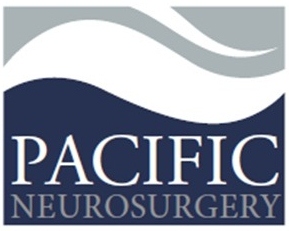Spinal stenosis is a degenerative back disorder resulting from the normal wear and tear on the spine that usually occurs with age. One of the most common back conditions, spinal stenosis affects about five of every 1,000 Americans by the time they are in their mid-fifties. As the discs and ligaments between vertebrae in the spinal column age, they become less flexible, lose fluid, thicken, and harden, causing the discs to bulge into the spinal canal. This causes the lumbar spinal canal and nerve exit sites to narrow. The result is pain, numbness, and weakness in the lower half of the body. While some patients have a constant degree of back pain, spinal stenosis mainly results in aching of the buttocks, back of the thighs, calves and shins, and sometimes the feet. Patients usually develop pain or aching first, and eventually experience numbness and weakness in these areas. Patients with spinal stenosis are usually uncomfortable when standing and walking and more comfortable sitting down or lying in the fetal position. While some patients have a constant degree of back pain, spinal stenosis mainly results in aching of the buttocks, back of the thighs, calves and shins, and sometimes the feet. Patients usually develop pain or aching first, and eventually experience numbness and weakness in these areas. Patients with spinal stenosis are usually uncomfortable when standing and walking and more comfortable sitting down or lying in the fetal position. While some people are born with a small spinal canal, most spinal stenosis occurs when something happens to reduce the amount of space available within the spine. Causes of spinal stenosis may include: Overgrowth of bone: Wear and tear on your spinal bones can prompt the formation of bone spurs, which can grow into the spinal canal. Paget’s disease, a bone disease that usually affects adults, also can cause bone overgrowth in the spine. Herniated discs: The soft cushions that act as shock absorbers between your vertebrae tend to dry out with age. Cracks in a disk’s exterior may allow some of the soft inner material to escape and press on the spinal cord or nerves. Thickened ligaments: The tough cords that help hold the bones of your spine together can become stiff and thick over time. These thicker ligaments can bulge into the spinal canal. Tumors: Abnormal growths can form inside the spinal cord, within the membranes that cover the spinal cord or in the space between the spinal cord and vertebrae. Spinal injuries: Car accidents and other major trauma can cause dislocations or fractures of one or more vertebrae. Displaced bone from a spinal fracture may damage the contents of the spinal canal. Swelling of adjacent tissue immediately following back surgery also can put pressure on the spinal cord or nerves. Most people with spinal stenosis have passed the age of 50. When younger people develop spinal stenosis, the cause is typically a genetic disease affecting bone and muscle development throughout the body. A diagnosis of spinal stenosis is confirmed using advanced imaging techniques including computed tomography (CT) and magnetic resonance imaging (MRI), which provide detailed images of spinal structures.
Using these imaging tools, doctors can quickly and easily diagnose spinal conditions, and confirm and locate the injured area with pinpoint precision. Treatment options vary based on the severity of your condition. In general, non-surgical treatment options are prescribed before pursuing any sort of surgical intervention. Non-surgical treatment options include physical therapy, non-steroidal anti-inflammatory medication, water-based exercise, and/or epidural injections. For people whose pain is not relieved through non-surgical treatments, surgery is usually the next option. Surgical treatment options vary depending on several factors including the degree of back pain, the number of vertebrae affected, and spine alignment. Your doctor will review with you the treatment options that are best suited to meet your medical needs. Surgical options include: Laminectomy and Laminotomy: involves a more thorough removal of spinal cord and nerve root(s) compression sources, such as herniated discs, bone spurs (arthritis), overlying bone, joint structures, ligament build-up, or tumors. This relieves pressure on the spinal cord or nerve root(s). The term laminectomy comes from the Latin words lamina (bony roof of the spinal canal) and ectomy (removal). Laminectomy removes all of the lamina on selected vertebrae. Laminotomy removes just part of the lamina, and may also remove arthritic overgrowth of ligament and bone. Both surgeries widen the space of the spinal cord or nerve root(s) and therefore relieve symptoms related to compression and irritation of the spinal cord or nerve root(s). These symptoms may include pain and/or numbness, tingling, burning, and weakness. Choosing laminectomy or laminotomy depends on the location and severity of the disease. Microdiscectomy and Discectomy: involves trimming or removing part of a disc when it comes in contact with the spinal nerve(s). The goal of this surgery is to relieve symptoms such as leg and/or back pain, weakness, and numbness in your legs and feet. This procedure requires a small incision (cut) of 1 – 2 inches on the back and is done using a microscope and microsurgical techniques. Microdiscectomy is particularly effective in relieving leg pain associated with lumbar disc herniation (rupture, tear). Spinal Fusion: involves stabilizing the motion segments using bone and sometimes metallic hardware. Spinal fusion is a surgical procedure done to stop the motion of two or more back bones (vertebrae). Sometimes, abnormal or too much motion of back bones puts pressure on spinal nerves and causes pain. Spinal fusion locks two or more back bones together using a bone graft that comes from your own body (pelvic bone) or from a bone bank. Over time, the bone graft and your back bones grow together and limit the motion at that segment. Pain is lessened, and there may be some restriction when you bend your back forward or backward. Indications for spinal fusion include the abnormal curvature of spine (for example, scoliosis or kyphosis), back pain, traumatic injury to the spine, and instability of the spine caused by infections, tumors, or surgical decompression of the nerve. Your surgeon will review the treatment option(s) that are best suited for your medical situation.
Anatomy of the Spine & Peripheral Nervous System
Exercise Treatment for Back Pain
Steroid Injections to Treat Back Pain
AANS Spinal Cord Injury Fact Sheet
CPMC Spinal Stenosis Handbook
Lumbar Spinal Stenosis
Laminectomy
Spinal Fusion
MicrodiscectomySymptoms
Causes/Risk Factors
Diagnosis
Treatment Options
Doctors Who Treat Spinal Stenosis
Patient Resources




